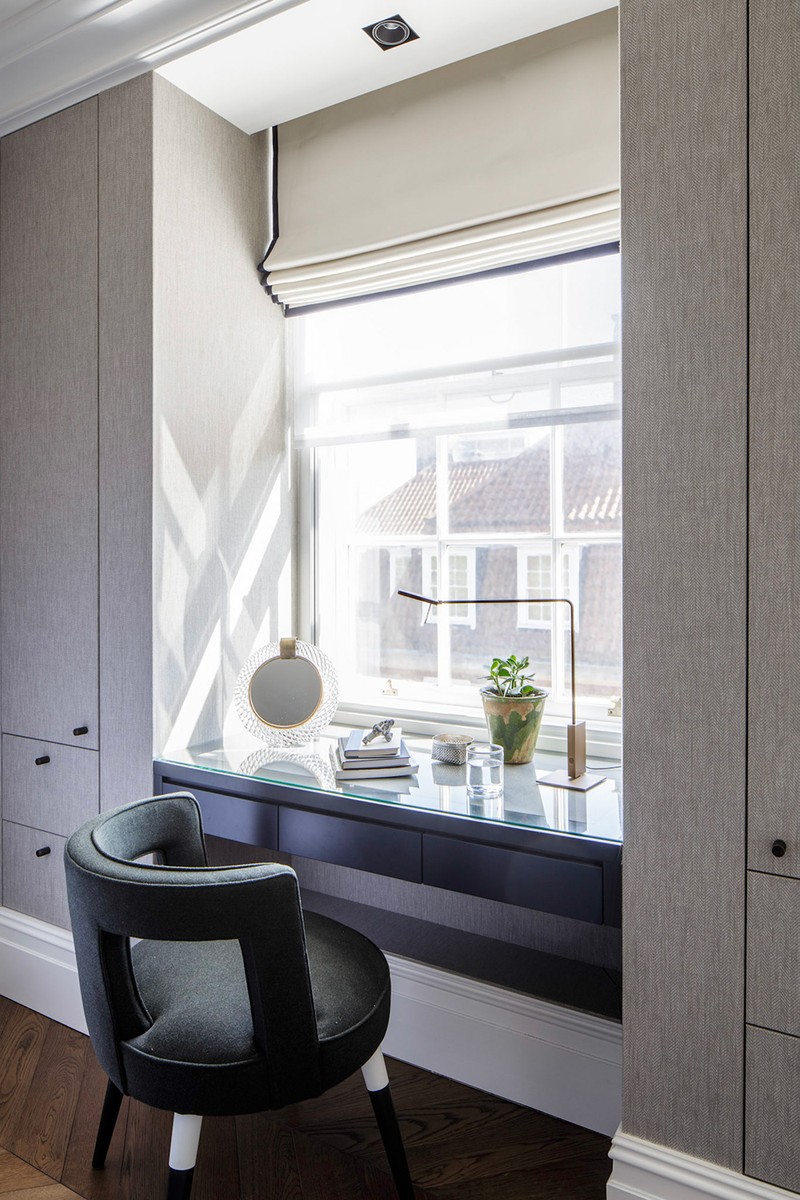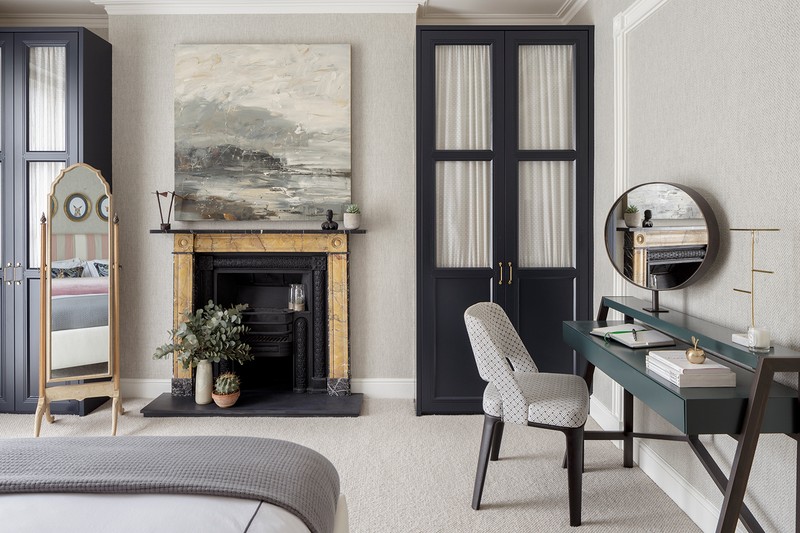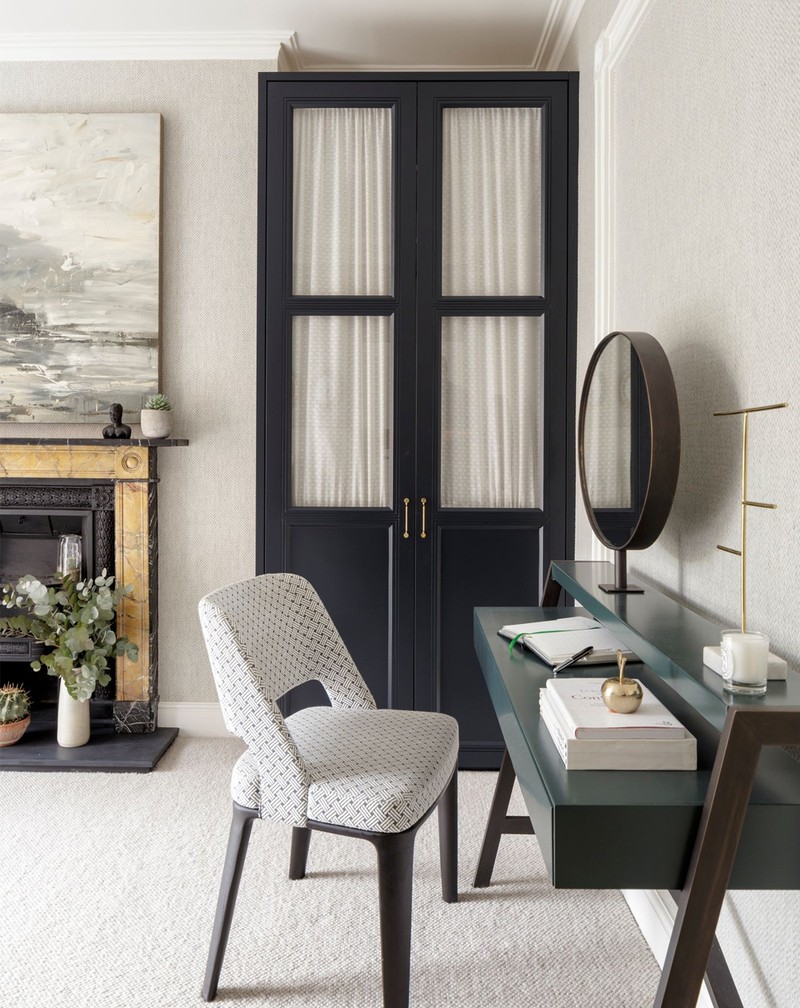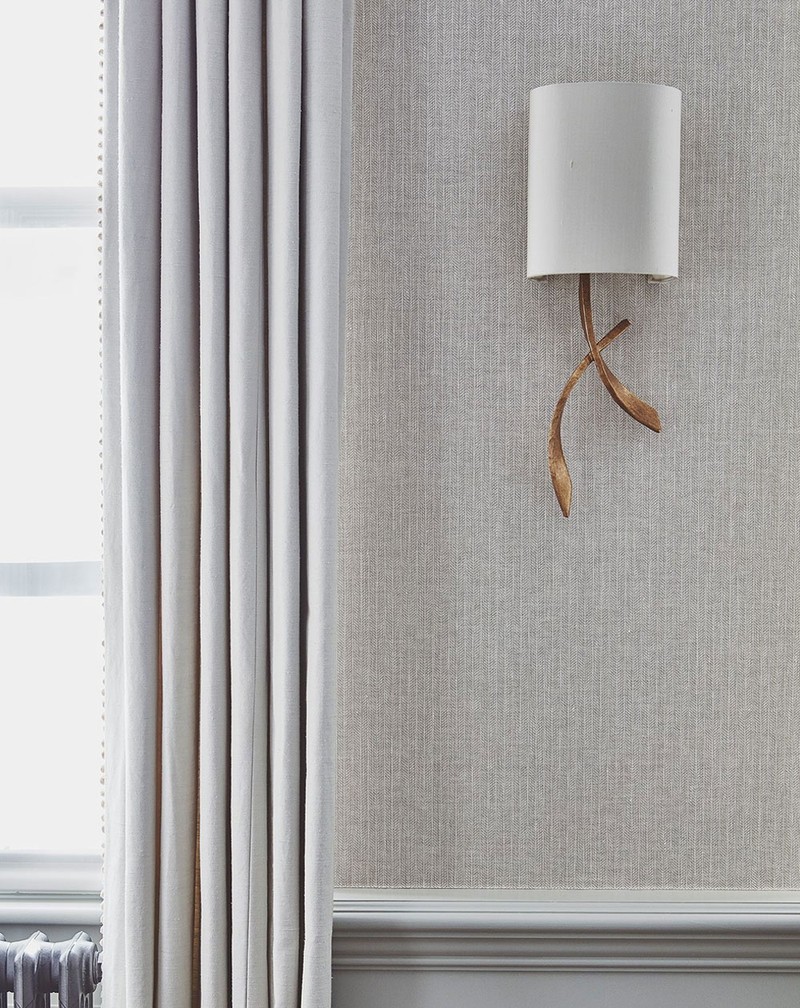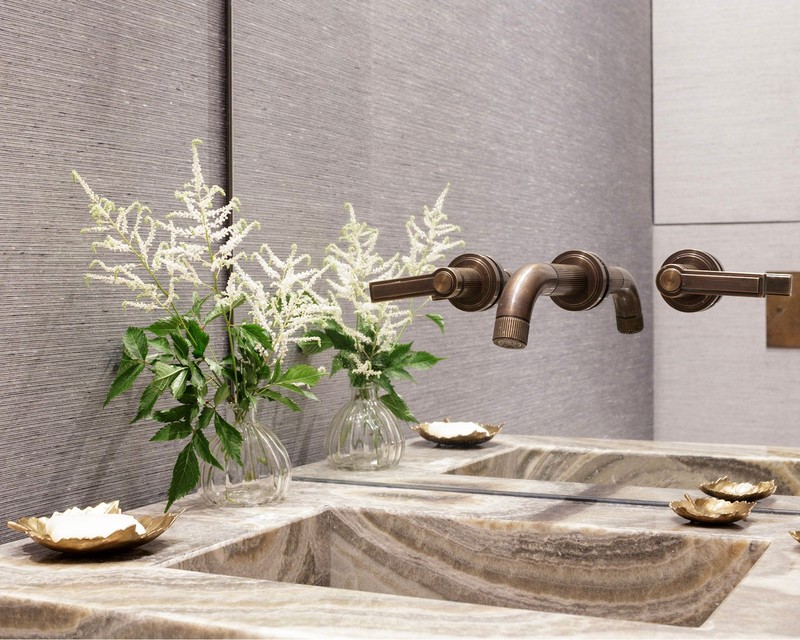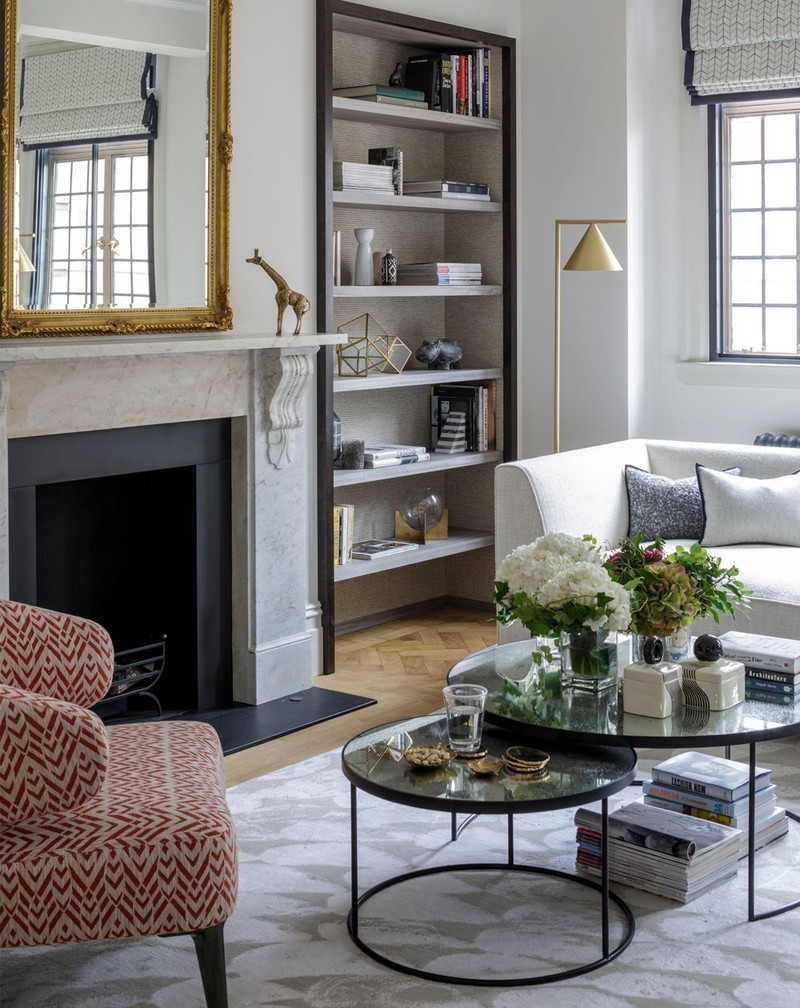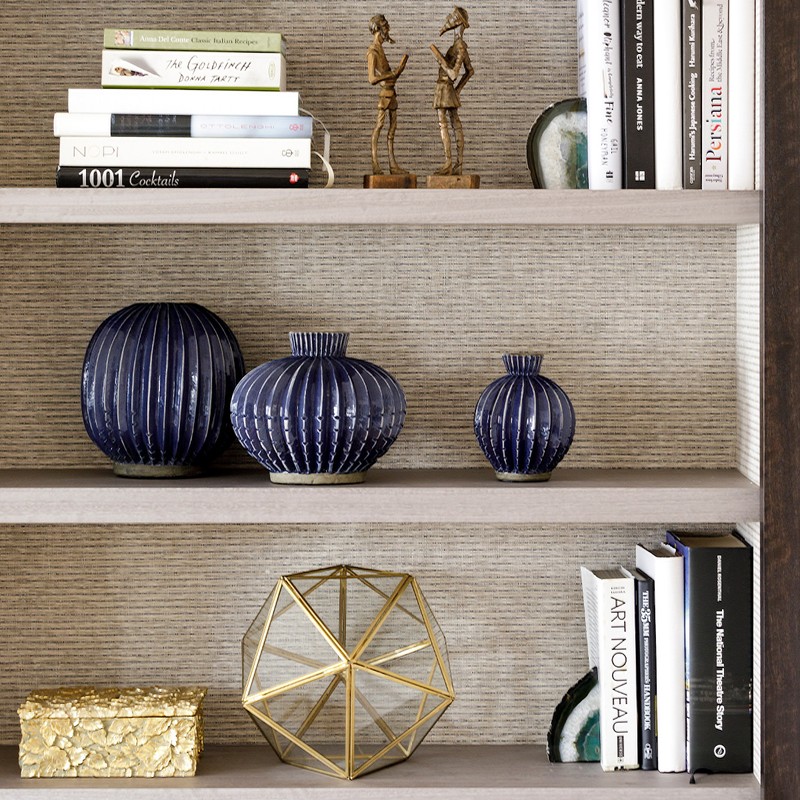
Fabric Walls: How & Why To Get One
It Adds A Bit of Luxury…
Paper-backed fabric can be hung on a wall in the same way as standard wallpaper – but the effect is far from average. “Paper-backed fabrics are one of my favourite things to use on walls,” explains interior designer Irene Gunter, who incorporates it into many of her schemes. “It adds a layer of luxury to a room, it’s tactile, and it’s warm and cosy. When you enter a room where it has been used, you just want to walk up to the wall and put your hand on it.” Paper-backed fabric has practical qualities too. “As well as softening schemes and adding interest to plain walls, it also works well at reducing noise as it’s more absorbent of sound,” explains interior designer Anna Hewitson.
…But Let The Professionals Help You
Last week, British fabric brand Fermoie – which creates beautiful patterned fabrics using traditional techniques in its Wiltshire factory – started a new paper-backing service for all its fabrics. Director Jamie Shawcross told us: “We have long been fans of upholstered walls and have helped clients to stretch fabric walling, but it’s a very skilled job (not to mention expensive). We’re always asked, when are you going to start making wallpapers? But we feel you simply don’t get the same texture from wallpaper, which is why we decided to offer a paper-backing service for all our fabrics.” This is not a DIY job to attempt over a wet weekend, however. Jamie recommends Tones Specialist Paper Hangers, which operates nationwide and understands the importance of hand-cutting margins, pattern matching and using the right adhesive.
If you already have a fabric in mind, Walltex paper-backs fabrics for corporate and residential use. As the brand’s Aimee Kandola explains, “A specialist decorator with experience of installing fabric wallpaper will need to overlap and mitre each panel to install. However, we are developing a new fabric collection of linen and cotton wallcoverings under our K Decor brand. We’re aiming to supply customers with fabric wallpapers as pre-trimmed rolls (around 68cm wide) for any experienced decorator to install easily.”
Remember: Different Fabrics Achieve Different Looks
The fabric you choose is crucial to the outcome. “Prints both big and small work with this approach, but the linen we use is particularly textural,” says Jamie. “You really get a sense of the weave and the uneven colours – like you’re touching the fabric.”
Irene is a fan of wool, for its seamless, cosy characteristics. “I like to use wool – herringbone and plain – as it has a super nice quality, and I like linens too. I find silk overly glamorous and sunlight destroys it so it’s best avoided. Also, with silk and grasscloth you can see the seam between rolls, but wool and linen tend be seamless and more regular. Around the skirting or coving, add a braided trim because it hides the joint where the fabric attaches to the wall, but also it is reminiscent of traditional period homes where it was originally used.”
To let this look really flourish, choose the wall fabric first and work the rest of the scheme around that. “You need to be careful not to overdress it. Keep the rest of the room more toned down to give it air to breathe. It works well in adult bedrooms, living rooms and dining rooms, but I’d avoid it in corridors or kids’ rooms, where it could get damaged.” Irene also suggests avoiding white and opting for neutral or dark colours – because the pigments are much richer on fabrics than wallpaper or paint.
WHERE TO BUY PAPER-BACKED FABRICS
DISCLAIMER: We endeavour to always credit the correct original source of every image we use. If you think a credit may be incorrect, please contact us at info@sheerluxe.com.
